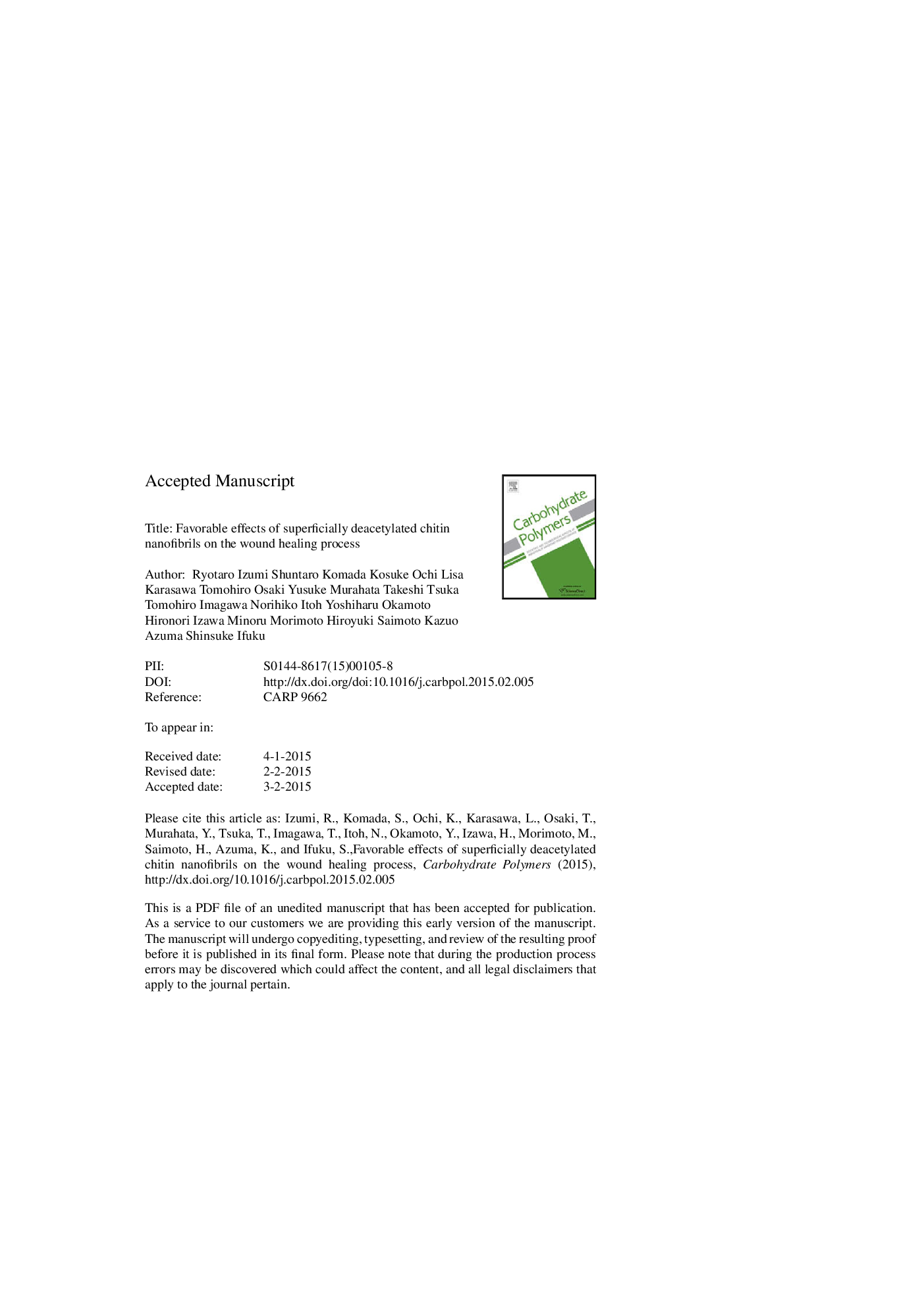| Article ID | Journal | Published Year | Pages | File Type |
|---|---|---|---|---|
| 7789171 | Carbohydrate Polymers | 2015 | 36 Pages |
Abstract
Previous reports indicate that the beneficial effect of chitin nanofibrils (CNFs), and chitosan nanofibrils (CSNFs) for wound healing. In this study, the wound healing effects of superficially deacetylated chitin nanofibrils (SDACNFs) were evaluated using an experimental model. In the experiments using circular excision wound model, SDACNFs induced re-epithelium and proliferation of the fibroblasts and collagen tissue. In the chitin, CNFs, and CSNFs, on the other hand, the e-epithelium and proliferation of the fibroblasts and collagen tissue were not induced perfectly compared with the SDACNFs group. In particular, re-epithelization was observed on day 4 in the only SDACNF group. Moreover, SDACNFs did not induce severe systemic inflammation in the linear incision wound model. The data indicated that SDACNFs effectively induced the proliferation and re-modeling phases compared with chitin, CNFs, and CSNFs in the wound. These data indicate that SDACNFs can be beneficial as a new biomaterial for wound healing.
Related Topics
Physical Sciences and Engineering
Chemistry
Organic Chemistry
Authors
Ryotaro Izumi, Shuntaro Komada, Kosuke Ochi, Lisa Karasawa, Tomohiro Osaki, Yusuke Murahata, Takeshi Tsuka, Tomohiro Imagawa, Norihiko Itoh, Yoshiharu Okamoto, Hironori Izawa, Minoru Morimoto, Hiroyuki Saimoto, Kazuo Azuma, Shinsuke Ifuku,
